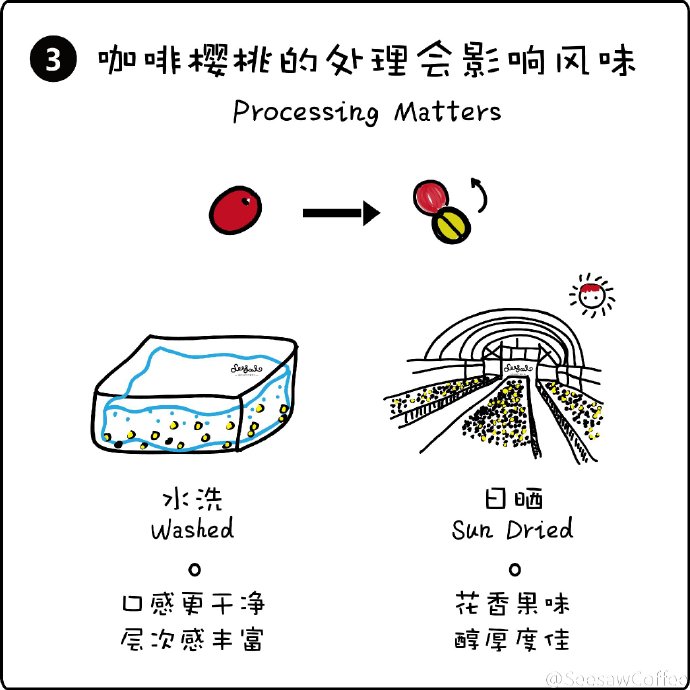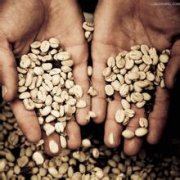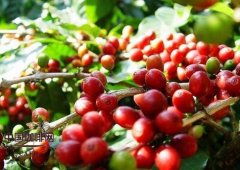Coffee bean treatment: honey treatment
Semi-lavado, also known as honey, miel, is actually a combination of sun and water washing fermentation to treat raw beans. First remove the peel and pulp of the coffee, then decide whether to remove pectin with a desmucilaginador or how much pectin is removed as needed, and finally reduce the moisture content of the green beans to 10%-12% by drying them in the shell or by sun or machine drying or a combination of both.
One step: retain 100% pectin and reduce the moisture content of the raw beans to 10%-12% by either solarization or machine drying or a combination of both.
Another step: adjust the setting of the pectin remover according to different needs, so that the parchment shell retains different proportions of pectin, and then reduce the moisture content of the raw beans to 10%-12% by either solarization or machine drying or a combination of both.
The green beans treated by water washing fermentation method generally have less silver skin attached, but the immature beans will retain most of the silver skin. Natural full sun and honey treatment of raw beans, according to the amount of pectin retained (more or less honey), more or less silver skin will also stick to the coffee beans, and show different shades of orange.
When selecting the defects of honey treated raw beans, it is necessary to scrape off the silver skin to observe the color of the coffee beans themselves. Honey-treated raw beans should also be noted when baking. If a large amount of silver skin cannot be discharged in time, its high temperature will burn the surface of coffee beans, resulting in inconsistent baking color.
In general, beans dried in the sun are bluer, greener and more uniform than those dried in the machine. The moisture content of raw beans cannot be judged simply according to the color depth. The best raw beans moisture content in 9%--12%, raw beans must be stored to control the moisture content, once the moisture content exceeds 13%, raw beans are easy to breed toxins.

Important Notice :
前街咖啡 FrontStreet Coffee has moved to new addredd:
FrontStreet Coffee Address: 315,Donghua East Road,GuangZhou
Tel:020 38364473
- Prev

Wet treatment is also called water washing and fermentation.
Wet treatment (lavado), also known as water washing fermentation. After the coffee fruit is transported to the coffee processing plant, the peel and flesh of the coffee are removed together with the peeling machine (despulpadora). The coffee beans are still wrapped in a parchment shell, while the parchment shell is covered with a layer of sticky and sweet pectin. Set
- Next

Fine coffee treated with red wine
High-quality coffee beans are refined by water treatment. The coffee beans with less impurities can be obtained by the water washing method, but if the water quality and time are not properly controlled during the fermentation process, the coffee beans will easily be infected with the sour taste of excessive fermentation. and dry beans also need to pay attention to timely re-inspection to prevent coffee beans from being contaminated by wet ground and sundries. Processed
Related
- What is the meaning of lactic acid fermentation with coffee bean treatment?
- How to judge the state of foam by sound?
- How does the latte pull out the unicorn pattern? Come to get for a little trick to improve the flower pull!
- Will flower pulling affect the taste of the latte?
- Do you know the history of coffee?
- The difference between honey treatment and sun washing what is raisin honey treatment?
- What kind of milk can a novice use to make coffee foam to keep the foam longer? The correct method and skills of milking tutorial sharing
- Why do washed coffee beans taste sour? Flavor characteristics of washed Coffee
- Introduction to the skill of how to practice the size and height of water injection around the circle of hand-brewed coffee
- How do beginners practice coffee flower drawing from scratch?

